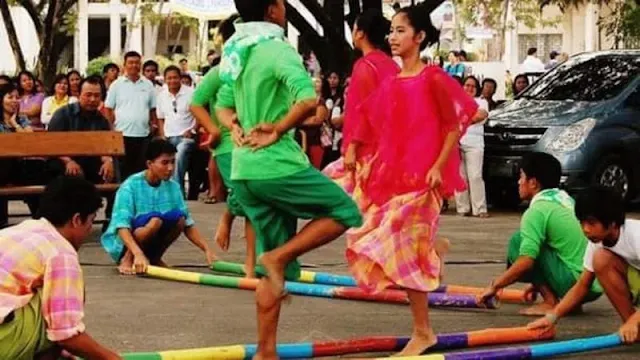The Philippines boasts a vibrant tapestry of traditional dances, each with its own unique charm and story. But if you're looking for the dance that truly steals the show at festive occasions, then look no further than the Tinikling, a lively and mesmerizing performance that weaves together agility, skill, and the distinctive click-clack of bamboo poles.
Ever wondered what the most popular traditional dance in the Philippines is that involves bamboo poles? It's Tinikling! Originating from the island of Mindanao, this dance isn't just about entertainment; it's a cultural expression deeply rooted in legend and symbolism.
It's the Bamboo-tastic Tinikling!
So, what makes Tinikling so special?
The answer lies in its dynamic interplay between dancers and bamboo poles. Imagine two pairs of bamboo clacking rhythmically against each other, creating a fast-paced challenge for dancers who must hop in and out without getting caught.
Their movements mimic the graceful agility of the tikling bird, known for its ability to navigate through tall grass and branches. Some believe this bird inspired the dance, while others see it as a representation of Filipino resilience during historical challenges.
But the bamboo's significance goes beyond simply mimicking a bird. Its lightweight yet sturdy nature makes it the perfect material for the clacking poles, creating a unique percussive element that perfectly complements the lively music. The intricate tapping and striking create a captivating rhythm that adds to the dance's overall energy and excitement.
Beyond its technical aspects, Tinikling holds a special place in Filipino celebrations.
During festive occasions, the dance's lively energy adds a burst of joy and cultural expression to the festivities. It often involves multiple performers, fostering teamwork and community spirit. The fast pace, engaging rhythms, and skilled movements captivate audiences, making it a surefire crowd-pleaser.
Tinikling's legacy doesn't just rest on tradition. The dance has evolved over time, incorporating modern music, faster tempos, and even acrobatic elements. Filipino communities worldwide keep the tradition alive by performing it, showcasing their cultural heritage to diverse audiences. It's more than just a dance; it's a symbol of Filipino pride, agility, and adaptability.
So, the next time you hear the rhythmic clack of bamboo and witness the captivating footwork of Tinikling dancers, remember, you're not just watching a performance; you're experiencing a vibrant piece of Filipino culture come alive.


No comments:
Post a Comment
Thank you for the comment.